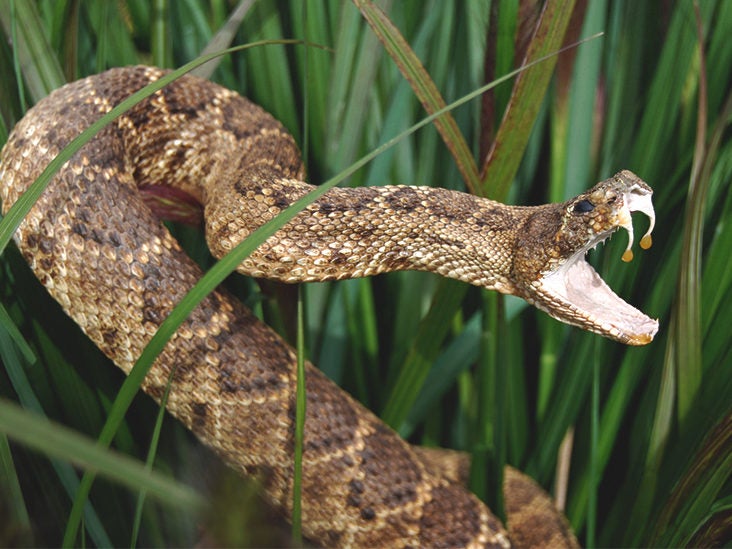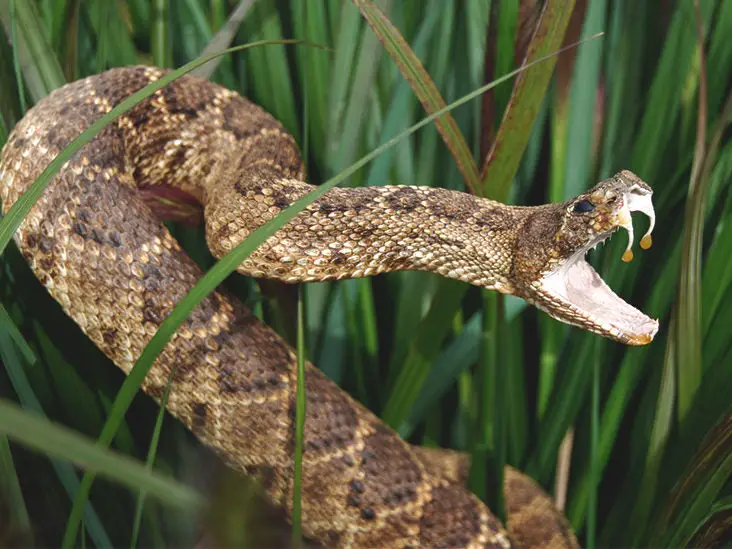Rattlesnakes are known for their intimidating rattle and venomous bite, but many people still wonder whether or not they are truly poisonous. The truth is, rattlesnakes are indeed poisonous, and their venom can be deadly if not treated promptly. In this article, we will explore the different types of rattlesnakes and the effects of their venom on humans and animals.
Yes, Rattlesnakes are venomous, not poisonous. They have specially adapted venom glands that produce and store venom, which they use to immobilize and kill their prey. Their venom can also be life-threatening to humans if left untreated. If you’re bitten by a rattlesnake, seek medical attention immediately.

Are Rattlesnakes Poisonous? The Truth About These Venomous Creatures
Understanding Rattlesnakes and Their Venom
Rattlesnakes are a type of venomous snake found in North and South America. They are known for the distinct rattle sound they make with their tails as a warning signal to potential predators or threats. But are these reptiles really poisonous? The answer is yes – rattlesnakes are venomous, and their venom can be deadly to humans and animals alike.
Rattlesnake venom is a complex mixture of enzymes and toxins that are designed to immobilize and kill prey. When a rattlesnake bites a human or animal, the venom is injected into the bloodstream through the fangs. The venom can cause a range of symptoms, including pain, swelling, tissue damage, and even death in severe cases.
Types of Rattlesnake Venom
There are two main types of rattlesnake venom: hemotoxic and neurotoxic. Hemotoxic venom affects the blood and tissues, causing swelling, pain, and tissue damage. Neurotoxic venom, on the other hand, affects the nervous system and can cause paralysis, respiratory failure, and even death.
The type of venom a rattlesnake produces depends on the species and location. Some rattlesnakes have a combination of both hemotoxic and neurotoxic venom, while others produce primarily one type.
Symptoms of Rattlesnake Venom Poisoning
Symptoms of rattlesnake venom poisoning can vary depending on the type of venom and the amount injected. Common symptoms include pain and swelling around the bite area, nausea and vomiting, dizziness, and difficulty breathing. In severe cases, the venom can cause paralysis, respiratory failure, and even death.
It’s important to seek medical attention immediately if you are bitten by a rattlesnake. Anti-venom treatment is the most effective way to counteract the effects of rattlesnake venom and prevent serious complications.
Preventing Rattlesnake Bites
The best way to avoid being bitten by a rattlesnake is to stay away from areas where they are known to live. Rattlesnakes are often found in rocky areas, deserts, and other dry, arid regions. If you must be in an area where rattlesnakes are present, take precautions such as wearing long pants and boots, staying on designated trails, and keeping a safe distance from any snakes you encounter.
Rattlesnake Venom Vs Other Snake Venoms
While rattlesnake venom is certainly dangerous, it’s worth noting that not all snake venoms are created equal. Some snakes, such as the black mamba and king cobra, produce venom that is much more potent and deadly than rattlesnake venom. However, rattlesnake bites are still a serious concern, and it’s important to take precautions when in areas where these snakes are present.
The Benefits of Rattlesnakes
Despite their dangerous reputation, rattlesnakes do serve a valuable role in their ecosystems. As predators, they help to control rodent populations and maintain a healthy balance in the food chain. In addition, rattlesnake venom is being studied for its potential medical applications, such as pain relief and cancer treatment.
Conclusion
In conclusion, rattlesnakes are indeed poisonous, and their venom can be deadly to humans and animals. Understanding the types of venom and the symptoms of poisoning is important for staying safe in areas where rattlesnakes are present. However, it’s also important to recognize the value that these creatures bring to their ecosystems and to respect their place in the natural world.
Frequently Asked Questions
What is a rattlesnake?
Rattlesnakes are venomous snakes that are found throughout North and South America. They are easily recognized by the rattle located at the tip of their tail, which they use to warn potential predators to stay away. Rattlesnakes come in a variety of colors and patterns, and can range in size from just a few inches to several feet.
Rattlesnakes are important predators in their ecosystems, helping to control rodent populations and serving as a food source for larger predators like hawks and eagles.
How can you tell if a snake is venomous?
Not all snakes are venomous, so it’s important to know how to tell the difference. Venomous snakes like rattlesnakes have a triangular-shaped head, while non-venomous snakes have a more rounded head. Venomous snakes also have slit-shaped pupils, while non-venomous snakes have round pupils.
If you encounter a snake in the wild, it’s best to give it plenty of space and avoid trying to handle it. If you do get bitten by a snake, seek medical attention immediately.
What happens if you get bitten by a rattlesnake?
Rattlesnake bites can be very dangerous, and can even be fatal if not treated promptly. The venom from a rattlesnake bite can cause a variety of symptoms, including pain, swelling, and difficulty breathing.
If you are bitten by a rattlesnake, it’s important to seek medical attention right away. Treatment may include antivenom, pain medication, and other supportive measures.
How can you avoid encountering rattlesnakes?
Rattlesnakes are typically found in dry, rocky areas, so it’s important to be aware of your surroundings when hiking or spending time outdoors. Wear sturdy, closed-toe shoes and avoid walking through tall grass or brush where snakes may be hiding.
If you encounter a rattlesnake, give it plenty of space and back away slowly. Do not try to handle the snake or provoke it in any way.
What should you do if you find a rattlesnake on your property?
If you find a rattlesnake on your property, it’s best to contact a professional wildlife removal service. Trying to handle or remove the snake yourself can be dangerous, and may result in injury or death.
If you must wait for a professional to arrive, keep a safe distance from the snake and keep pets and children indoors. Rattlesnakes are most active in the morning and evening, so it’s important to be especially cautious during these times.
What Happens if a Rattlesnake BITES You?
In conclusion, the answer to whether rattlesnakes are poisonous is a resounding yes. Rattlesnake venom can cause severe damage to the human body, including tissue damage, nerve damage, and even death in some cases. It is important to exercise caution when encountering these creatures, and to seek medical attention immediately if bitten.
Despite their potentially dangerous nature, rattlesnakes play an important role in our ecosystem. They help to control rodent populations and are a vital food source for many predators. By respecting these creatures and their habitats, we can coexist with them safely and responsibly.
In the end, it is important to remember that every living creature has a purpose and a place in our world. With education and awareness, we can learn to appreciate and protect these fascinating animals, while also keeping ourselves and our communities safe. So, yes, rattlesnakes are poisonous, but they are also an important part of our natural world that deserves our respect and protection.


